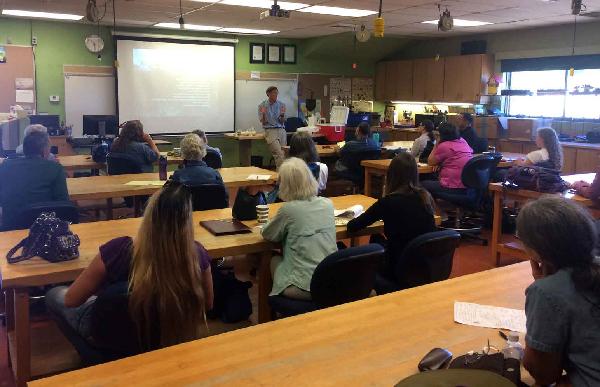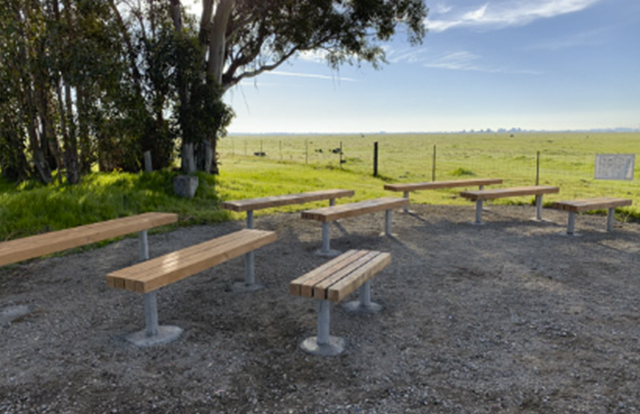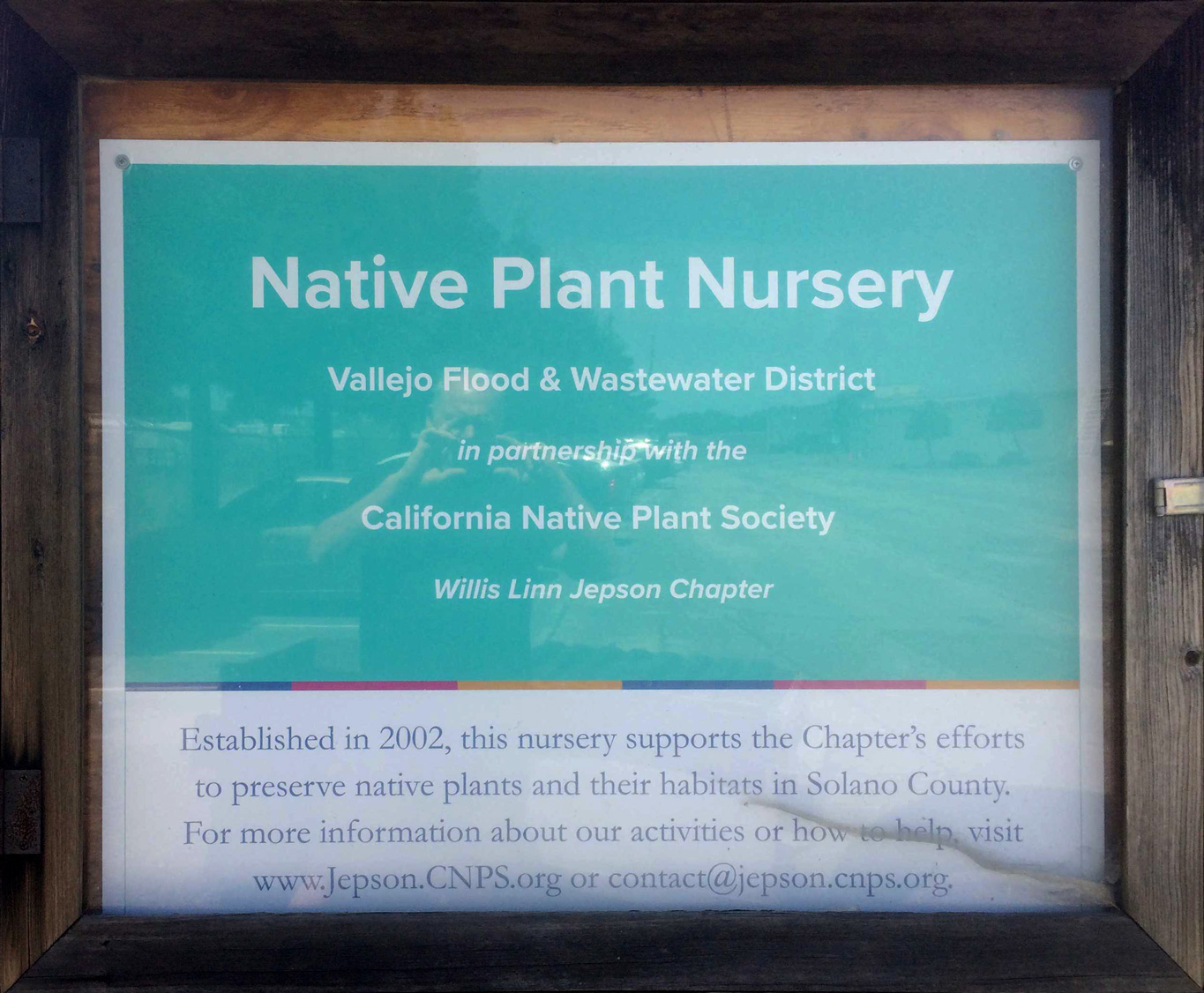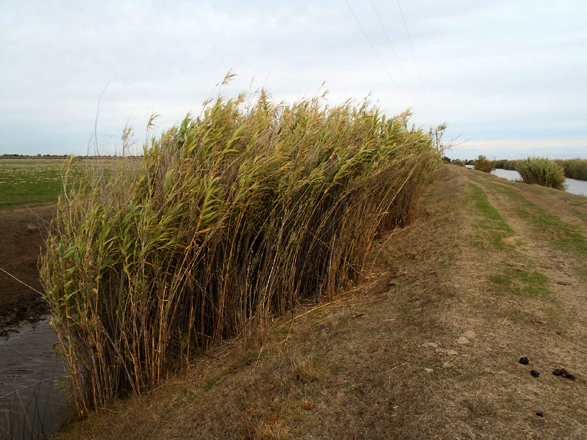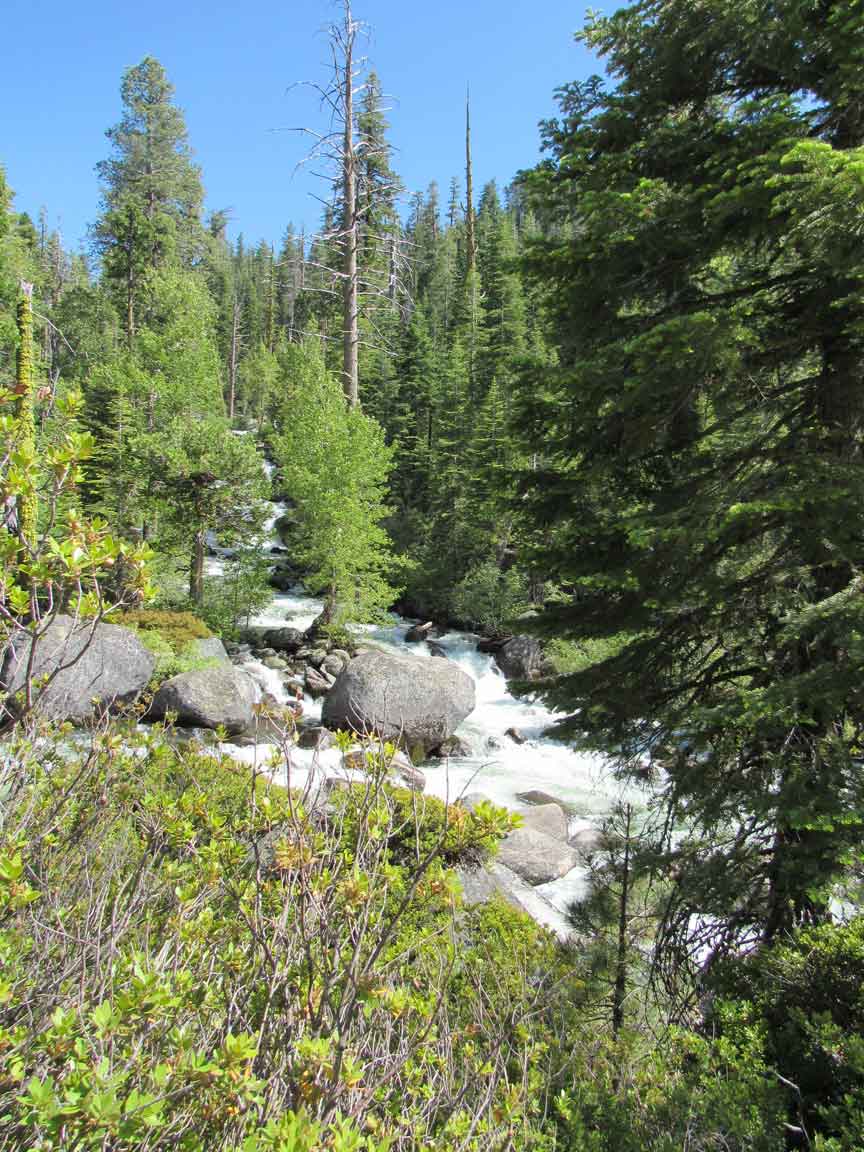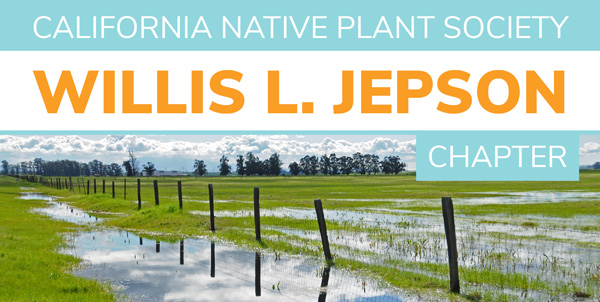
|
| JULY/AUGUST 2019 CHAPTER NEWSLETTER |
Chapter Hosts Workshop on Protocols for Detecting Plant Disease in NurseriesA recent effort by CNPS to support its policy to reduce the spread of plant pathogens via nurseries occurred on June 22 in Fairfield where the Willis Linn Jepson Chapter hosted a CNPS-sponsored workshop to educate nurseries on new protocols that use bait testing of container plants to detect Phytophthora infestations. Phytophthora is a Greek word meaning "plant destroyer" and is a group of pathogens that is causing serious damage to native plant habitats in California. Nineteen people representing eight CNPS chapters, two local agencies and a commercial nursery, arrived at 9:00 AM for over three hours of instruction at Solano Community College's Horticulture Department. The workshop was led by Ted Swiecki, Ph.D., who is a founding member of Phytosphere Research and serves as Conservation Chair on the Jepson Chapter Board of Directors. Other Chapter volunteers supporting the workshop included Sandra Diehl, Steven Goetz, and Pam Muick. The protocols covered in the workshop were developed by the Work Group on Phytophthoras in Native Habitats, a coalition of professionals in the field of habitat restoration. These protocols involve testing leachate from container plants, either individually or from batches of containers on a plant bench. Green pears, which are a highly susceptible host for Phytophthora pathogens, are used as bait to attract "zoospores" in the leachate and confirm an infestation. [READ MORE]
|
BRYOPHYTES - WHAT ARE THEY AND WHY SHOULD I CARE?
Find the answer to these questions at a joint meeting of the Willis Linn Jepson Chapter of CNPS and the Solano Community College Horticulture Club, which is scheduled for August 12th, 6:00 PM at Solano Community College's Horticulture Department, Building 1000, 4000 Suisun Valley Road in Fairfield. The meeting will feature a program by Dr. Stephen Rae (see picture on the left), Curator of Bryology at University of California - Davis, who will describe a class of native plants called Bryophytes. Often overlooked, bryophytes are non-flowering plants that have been around longer than flowering plants. And, if you thought that flowering plants forced you to learn many new terms, bryophytes have a jargon all their own. Come see examples collected nearby. There will be a quiz at the end of the talk, with prizes! |
NATIVE HABITAT PROJECT PROGRESSES IN VALLEJOMultiple local agencies and groups are starting the second year of a native habitat enhancement project at Lake Dalwigk in Vallejo. The Solano Resource Conservation District (RCD), in partnership with Vallejo Flood and Wastewater District, the Greater Vallejo Recreation District and the Vallejo Watershed Alliance, will begin work rehabilitating vegetation in and around the lake this summer. According to wastewater district spokeswoman, Jennifer Kaiser, work will begin on trimming the palm trees around the lake, and removing debris and small growths around their base and trunks. Some palms will be removed as well as some dead and diseased sycamores. This coming winter, more than 200 native trees and shrubs will be planted around the lake. Last winter, native plants and shrubs were planted on the two islands in the middle of the lake. According to the Solano RCD project manager, Sarah McKibbin, another major task this year involves battling an invasion of stinkwort (Dittrichia graveolens), an exotic weed designated by the California Invasive Plant Council as a Red Alert species that is spreading in the newly planted areas as well as through much of the project site. [READ MORE]
Habitat restoration workers approach one of the islands at Lake Dalwigk, which is located along Curtola Parkway in Vallejo. |
NEW BENCHES FOR VISITORS AT JEPSON PRAIRIE PROJECTThanks to $7,000 in donations and over 300 hours of volunteer service, now roughly 60 people can sit and admire the beauty of Jepson Prairie from benches recently installed by the Solano Land Trust at their new Visitor Center. The donations include $2,000 from the Willis Linn Jepson Chapter, which was described in an announcement on the Chapter website in 2018. The benches were installed by Solano Land Trust volunteers, which included Ken Poerner, a member of the Jepson Chapter. Ken has led the overall implementation of the Jepson visitor area improvement plans, including the bench and sign installations. Further details on the project can be found at the Solano Land Trust website, www.solanolandtrust.org.
Benches installed in the new Visitor Center at Jepson Prairie. |
NATIVE PLANT NURSERY IN VALLEJO, OUR REVENUE SOURCEThe Chapter's native plant nursery in Vallejo generated over $2,500 in sales this past year and provides the primary source of funding for our native plant conservation activities in Solano County. Come help propagate plants for our next plant sale by volunteering at one of our nursery work sessions, every Thursday from 10 to noon. The Chapter website has a tour of the nursery. If you like what you see, come join us at a work session. Bring a sunhat and liquids. Tools and instructions will be provided. Knowledge of plants is not necessary; your willingness to help is all that’s required. The nursery is located in the corporation yard of the Vallejo Flood and Wastewater District at 47 Solano Avenue (near Sonoma Boulevard). This is a secured facility so contact our Plant Sale Chair, Barbara Reiley, at breiley45@yahoo.com to receive instructions for getting through the gate.
Sign posted for the native plant nursery at the Vallejo Flood and Wastewater District. |
STATE RENEWS FUNDING FOR WEED MANAGEMENT AREASThe state budget just signed by Governor Newsom includes $3 million in funding for Weed Management Areas (WMAs) through the California Department of Food and Agriculture. This funding will help continue the Noxious Weed Grant Program, which awarded nearly $120,000 to projects this year to abate noxious weeds in Solano County as reported in last month's newsletter. The 2019/20 budget builds upon last year's successful effort to appropriate $2 million in funding for WMAs, which was supported by the Willis Jepson Chapter. That appropriation represented a new initiative by the state as part of the California Biodiversity Initiative adopted by Governor Brown in 2018. The initiative contains a comprehensive set of actions for all state agencies to conserve California's biodiversity. These actions include collaborating on the challenges posed by weeds and invasive species to California's biodiversity. [READ MORE]
Arundo donax (Giant reed grass) is a noxious weed shown growing in the Cache Slough area and is the target of a Solano County Weed Management Area project. |
PLANT OF THE MONTH: Arctostaphylos tomentosa (Woollyleaf manzanita)
An evergreen spreading shrub with reddish shreddy bark. This manzanita has many subspecies and can vary in flower color from white to pink when it blooms from January to March. Its dark or bright green leaves can be hairy to hairless, oval to lance-shaped and sometimes toothed, but the upper surface is generally darker and shinier than the lower. The fruits are fuzzy reddish drupes under a centimeter in diameter. Its stems can be gray to red and are hairy when young. It is generally wider than tall, usually growing slowly to about five feet high, in full sun to part shade, takes light to moderate irrigation, prefers well-draining acidic soils but can adapt to other soils. Woollyleaf manzanita does well in coastal conditions and is endemic to chaparral canyons, foothills and lower-elevation mountains from the Central Coast to the Bay Area. Photo to the left is Arctostaphylos tomentosa ssp. crustacea shown growing at the East Bay Parks Botanic Garden in Berkeley. |
PHOTOS FROM SUMMER 2019 HIKESWe have been reporting on the wildflowers and other native plants found on hikes taken by members of the Willis Linn Jepson Chapter this year. Click here for the photos taken from the Caples Creek area in June.
Caples Creek in the El Dorado National Forest, Kyburz, CA. |
ARTICLE CORRECTION FROM JUNE NEWSLETTERLast month the newsletter included an article "Weed Control Grants Protect Local Plant Habitat." The description of the grant received by the Suisun RCD requires two edits. The drone company is Leading Edge Aerial Technologies (not Leading Edge Associates) abbreviated as LEAT (not LEA). The drone's two spray booms create a swath width of 20 feet (not 10 feet). |
Upcoming Events
|

|
|
|
|
CNPS Statewide Website | Jepson Chapter Website |
